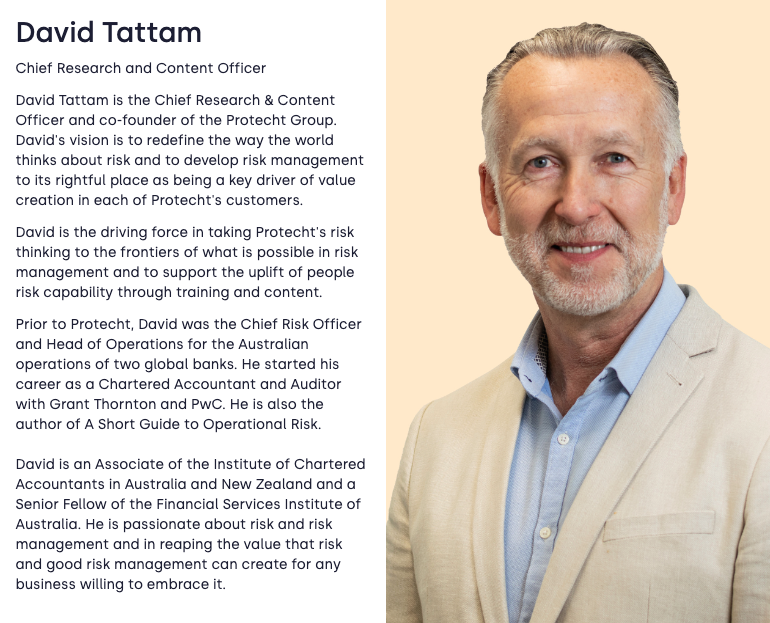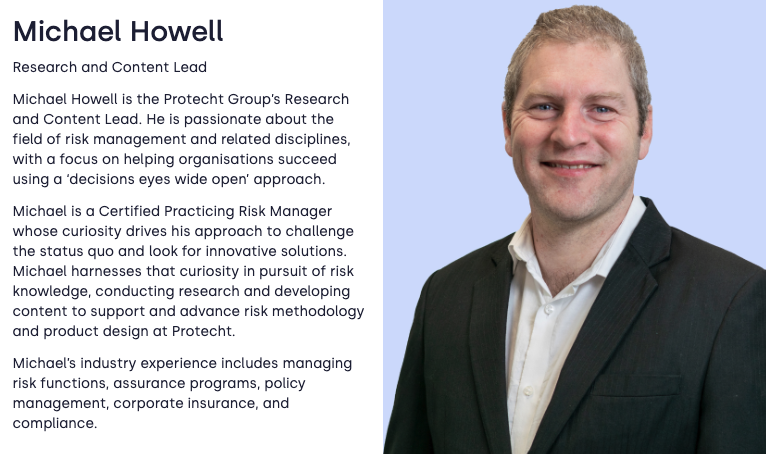*Please contact RiskNZ directly if you would like to discuss packages to implement this training across your organisation. Bulk discounts are available.
Protecht helps create the risk leaders of tomorrow by providing risk training that meets people where they are in their risk management journey.
It is an online learning platform that enables delivery of Protecht’s risk methodology training to individuals or organisations that is backed by decades of industry experience, an understanding of risk management challenges learned through ongoing engagement with Protecht customers and the risk community, and a commitment to high quality training materials.
Organisational Risk Excellence Series: Please see the below table and email [email protected] for more into and to register.
Short Course Example:
Protecht Incident Reporting for Everyone
Other short courses:

Protecht Academy courses are broken down into two Catalogs:
Organisational Risk Excellence – primarily intended for groups and organisations.
Risk Management Mastery – aimed at individuals or for teams looking to upskill in a specific area
- Enterprise Risk Management – Bringing it To Life
- Risk Bow Tie and root cause analysis
- Risk appetite statements and frameworks
- Risk and control self-assessment
- Controls design and assurance
- Compliance management and compliance risk management
- Risk metrics and Key Risk Indicators
- Culture & Conduct Risk Management
- Third Party Risk Management
- Strategic & Project Risk Management
- Incident Management
- Operational Resilience
- Cyber Risk & Information Security Management
Note: By completing and submitting a course application form (online, emailed request or in any other form that was used to make a training booking), you are agreeing to Protecht Academy User Terms & Conditions and RiskNZ’s Training Terms and Conditions.



